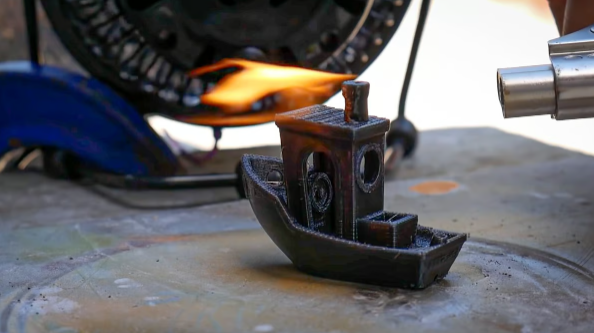
Yes, ABS (Acrylonitrile Butadiene Styrene) can be injection molded to be flame retardant. Flame retardant ABS is commonly used in applications where both the mechanical properties of ABS and enhanced fire resistance are required. This can be achieved by incorporating flame retardant additives into the ABS material during its formulation.
Key Points About Flame Retardant ABS
1. Additives Used
- Halogenated Additives: These include brominated and chlorinated compounds. They are effective flame retardants but can release toxic gases during combustion.
- Non-Halogenated Additives: These include phosphorus-based compounds, metal hydroxides (like aluminum hydroxide and magnesium hydroxide), and intumescent agents. They are more environmentally friendly compared to halogenated additives.
2. Properties and Standards
- UL 94 Ratings: Flame retardant ABS can achieve various UL 94 ratings, such as V-0, V-1, or V-2, which indicate the material’s ability to extinguish flames. V-0 is the highest rating, indicating the best flame retardancy.
- Mechanical Properties: Adding flame retardants can affect the mechanical properties of ABS, such as impact resistance and tensile strength. The specific formulation is designed to balance flame retardancy with the desired mechanical properties.
3. Applications
- Electronics and Electrical Components: Used in housings, connectors, and other components that require flame retardancy to meet safety standards.
- Automotive Parts: Used in various interior components that must comply with fire safety regulations.
- Building Materials: Utilized in applications like electrical enclosures and paneling where fire resistance is crucial.
4. Injection Molding Process
- Temperature Control: The processing temperatures need to be carefully controlled to prevent degradation of the flame retardant additives.
- Mold Design: The mold design may need to account for the specific flow characteristics of the flame retardant ABS, which can differ slightly from standard ABS.
[elementor-template id=”4330″]
Sources for Further Reading
These sources provide detailed insights into the formulation, properties, and applications of flame retardant ABS, as well as guidelines for processing and achieving desired safety standards.
Related Conten: Plastic Blow Molding
 DTG Mould Trade Process |
|
| Quote: | According to sample, drawing and specific requirement. |
|---|---|
| Discussion | Mold material, cavity number, price, runner, payment, etc. |
| S/C Signature | Approval for all the items. |
| Advance | Pay 50% by T/T |
| Product Design Checking | We check the product design. If some position is not perfect, or can not be done on the mould, we will send customer the report. |
| Mold Processing | Send report to customer once each week |
| Mold Testing | Send trial samples and try-out report to customer for confirmation |
| Mold Modification | According to customer’s feedback. |
| Balance Settlement | 50% by T/T after the customer approved the trial sample and mould quality. |
| Delivery | Delivery by sea or air. The forwarder can be designated by your side. |
 |
|

